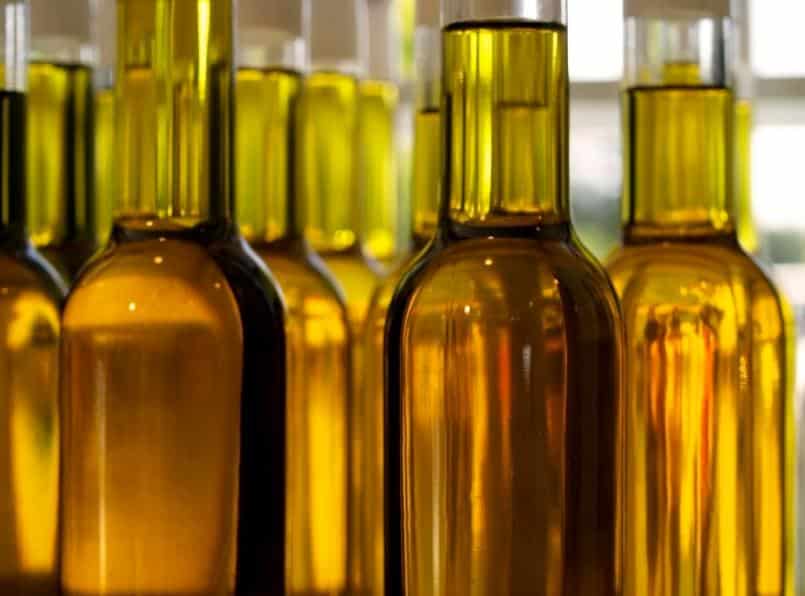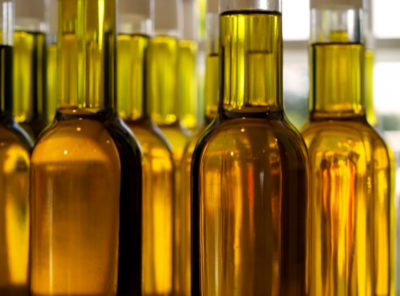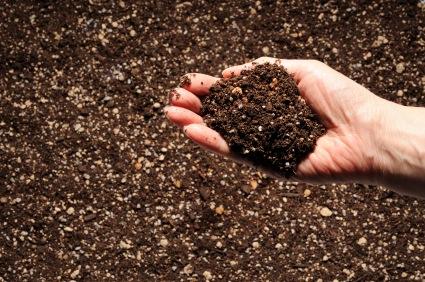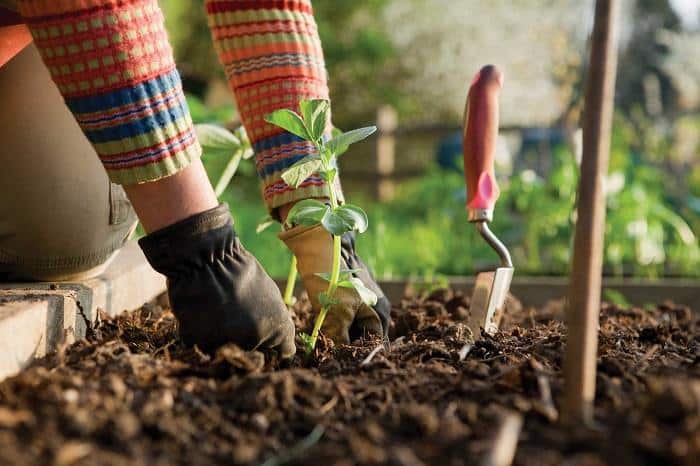These days, vinegar finds itself mainly as an ingredient in salad dressings and various types of pickles, canned or otherwise. Did you know that there are other uses for vinegar, many of which go beyond mere culinary use? Do you have a batch of homemade vinegar that you have read may not be the best thing to use for your canning? Are you questioning the whole point of making vinegar in the first place? Question no more—here are some other ways to put your vinegar to good use in your household!
Cleaning
The acidic nature of vinegar makes it useful for many cleaning applications. In general, vinegar has properties that kills germs and disinfects the area to which it is applied.
1. Make Your Own Multi-Purpose Cleaning Solution – Many cleaners can be replaced by a simple mixture containing vinegar. Recipes abound on the Internet—some very simple and some more complex. I tend to go simple with a solution of half vinegar, half water, and a few drops of essential oils (lavender, tea tree, orange, lemon) and put this in a spray bottle (repurposed, or one purchased new). I use this for cleaning around the house, from kitchen counters, sinks, the stove, to the bathroom sinks, tub, and the toilet. Be sure to label the bottle so that others know what is in it and so you can remember what ingredients you used.
Vinegar alone has the ability to kill germs, bacteria, and mold when left to sit on a surface for about one minute. If you want something with even more sanitizing power, you may spray with the vinegar solution, then with hydrogen peroxide, and allow it to sit a minute or two before wiping clean.
Here is a more complicated recipe, should you feel adventurous or want something with a little more variety or a little bit different cleaning application:
Multipurpose Cleaner
- 1 teaspoon borax (located in the laundry section of the store)
- 1/2 teaspoon baking soda
- 2 teaspoons vinegar
- 1/4 teaspoon or 1 squirt of liquid dish soap
- 2 cups hot water
Combine in a spray bottle, label it, and include an ingredients list. Use on most any surface for routine daily cleaning. This one works especially well on stovetop messes: spray, let sit 15 minutes, and wipe clean. For oven cleaning, spray surfaces, leave to soak overnight, and wipe clean in the morning.
Cleaning The Kitchen
2. Coffeemakers – To get rid of mineral deposits in a coffeemaker, use about 1/4 cup vinegar with your usual amount of water and run through your coffeemaker as if you were brewing coffee (sans coffee, of course). Run a second cycle with only water to rinse any vinegar from the coffeemaker.
3. Teapots and Tea Kettles – Pour about 1/2 cup vinegar into your teapot, along with the amount of water you would usually use, and boil the water/vinegar mixture for 10-15 minutes. If you have a whistling teapot that you cannot remove the whistling element from, you may instead allow it to soak. Any mineral deposits should be dissolved or have become easy to remove with a soft brush or cloth. Rinse with fresh water and you should be good to go.
You may use the above method on pots and pans as well.
Naturally Clean Home: 150 Super-Easy Herbal Formulas for Green Cleaning…
4. Enameled and Copper Pots and Pans – These may be renewed by rubbing with salt moistened with vinegar.
5. Dishwashers – Pour about 1/2 cup vinegar in the bottom of your dishwasher and run a rinse cycle. This should help to deodorize your dishwasher and open up minor clogs in the drain lines.
6. Microwaves – Do you have food splatters in your microwave that are a pain to get off? Place a bowl containing 1 cup water and 1/4 cup vinegar in microwave, boil 3 minutes and let sit a bit. Food should then remove easily with a damp sponge or cloth.
7. Ovens – Ovens are often a forgotten kitchen appliance—that is, until someone comes over and you realize how much you need to clean it! You can use vinegar much like you would in a microwave to remove food deposits. If your oven is dirtier than this will remedy, you may mix baking soda with enough vinegar to form a toothpaste-like consistency, apply this to the areas in the oven that need it, allow to sit about an hour, then wipe with a sponge or cloth. Follow with a wiping down of the oven interior with a mixture of half vinegar and half water; this will help to prevent future grease build-up.
8. Oven Vents – For oven vents, wipe with a sponge moistened with undiluted vinegar. Alternatively, remove the vents and soak in a mixture of 1 cup vinegar and 3 cups water for about 15 minutes.
9. Floors – 1 cup of vinegar in 1 gallon of hot water makes a good and simple floor cleansing solution. If your floors are wood, do not saturate the floor in this mixture. It should, however, be fine for light mopping. I sometimes add a few drops of essential oil if I want a different scent.
Cleaning The Bathroom
10. Bathtub Ring – Bathtub rings can be addressed by soaking paper towels or rags in vinegar, placing them around the tub on the ring and leaving them until they dry. Remove the towels, spray with vinegar and scrub ring off with a sponge or cloth.
11. Showers – Shower heads can become clogged with mineral deposits. To remove the mineral deposits, mix 1/2 cup of vinegar in a quart of water and place in a large bowl or bucket. Remove your shower head and soak in the bowl or bucket for about 15 minutes. Plastic showerheads may be soaked in a 1:1 mixture of vinegar and water and soaked longer. Alternatively, you can place the vinegar and water mixture in a plastic bag and tie this over your shower head while it is still in the shower, ensuring the liquid mixture covers the fixture. Secure with rubber bands, twist ties, twine, or the like.
Shower walls and curtains can also hold onto mineral build-up. Instead of purchasing a commercial anti-build-up spray, keep vinegar in a spray bottle near your shower and spray the areas once or twice a week after the last shower of the day. There is no need to rinse.
12. Hard Water Deposits Around Faucets And In Sinks – These may be dissolved by soaking a rag in vinegar and covering the areas liberally. Leave on for at least an hour and scrub with an old toothbrush. Repeat if necessary.
13. Toilets – Pour vinegar into toilet and allow to soak for half an hour. Next, sprinkle baking soda and allow to foam. Use a toilet brush to scour bowl, and flush.
The Ultimate Guide To Self-Sufficient Living For Country, Urban, and Suburban Folks
Doing The Laundry
14. Fabric Softener – Adding 1/2 cup of vinegar to the rinse cycle will help to soften your clothes without adding unnecessary fragrances and chemicals to your laundry. For blankets, add 2 cups of vinegar to the rinse cycle to remove any soap residue and to help fluff them up. Adding vinegar to the rinse cycle also helps to reduce lint build-up and keeps pet hair from accumulating on clothing. It also helps with static cling.
Stains
15. General Stain Remover
- 1/2 cup vinegar
- 1/2 cup ammonia
- 1/2 cup baking soda
- 2 squirts of liquid dishwashing soap
- 2 quarts of water
Combine all ingredients in a spray bottle and label clearly. Apply directly to stains before putting soiled items into the washer.
If you wish to try a simpler alternative to the above stain remover, you can use a basic mix of half water and half vinegar in a spray bottle to spray on stains just before placing items in the washer.
Here are some instructions for treating specific stains:
- Coffee/Tea – soak in mixture of 1/3 cup vinegar and 2/3 cup water, then hang to dry outside in direct sunlight.
- Grass – Soak in straight vinegar for a half hour before washing.
- Gum – Gum is more easily removed after soaking item in straight vinegar for 10-15 minutes. Remove gum, then launder as usual.
- Mildew – For mildew stains, a mixture of salt, vinegar, and water should remove the stains. If the stain persists, use salt and vinegar with no water for a stronger cleanser.
Home Maintenance
Cleaning around the house is not the only household activity that can make good use of your vinegar. Here are some other ways beyond cleaning.
16. Slow Draining Sinks/Minor Clogs – These may be tackled using common household ingredients, including vinegar. Minor clogs can be addressed with a mix of 1/2 cup baking soda and 1/2 cup vinegar. Pour them down the drain, allow to foam up and fizz, then let sit for 3 hours. After that time is up, flush with hot water. For a slow draining sink, make a solution of equal parts vinegar, salt, and baking soda, and pour down drain. Allow to sit about 1 hour, then pour boiling water down the drain.
17. Painting – Use diluted vinegar (1 part vinegar to 5 parts water) to wipe down metal items before painting. This will help to remove any grease or dirt and will help the paint to adhere better, making peeling less likely.
Hardened paint brushes may be renewed by soaking them in boiled vinegar. Soak only a few hours at the maximum, as a longer soaking may ruin the bristles. After soaking, wash and rinse the brushes thoroughly and air dry before using.
To remove dried paint from windows, first spray with warm vinegar, then peel or scrape off paint from the window.
18. Wood Repair – For repairs where you need to take a piece of wooden furniture apart, vinegar may be dripped into/onto areas where the furniture is joined to dissolve the glue. An eyedropper helps with getting the vinegar where you want it. Drip the vinegar in, allow it to sit a bit to soak into and dissolve the glue, then gently but firmly pull the wooden pieces apart.
19. Removing Stickers/Decals – A soaking in a vinegar/water solution will help to more easily remove stickers and decals… a great help when your child decides your kitchen table is a great place to place their sticker collection. Use care on a wooden table and test a hidden area first.
20. Rust – Rusty tools and items such as bolts, nuts, and nails can be renewed by soaking in vinegar for a few hours or up to overnight. Remove from vinegar and rub away rust, then rinse and dry thoroughly.
There you have it—many ideas for putting your vinegar stores to good use! How have you used vinegar in your home care? Where did you get your ideas? How well does it work for your household needs? Please share!












